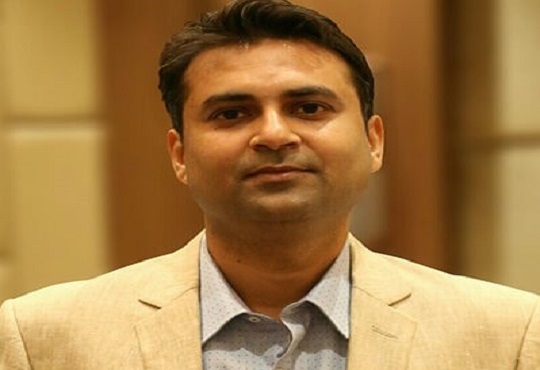
How India's Technological Capabilities Doubled in Two Decades
Janifha Evangeline, Assistant Editor, CIOTechOutlook | Friday, 10 May 2024, 14:05 IST

As per a report by the UN agency which was released on May 2, 2024, India witnessed a huge increase in their technological diversification over the last two decades as its technological capabilities have doubled from 9 to 21 percent. A revival of industry policies globally, with nations turning towards technological innovation in order to broaden the scope of their economies & was announced by the United Nations.
The World Intellectual Property Organization (WIPO) highlighted that nations are pursuing diversification as well as greater productivity by focusing more on improving the current strengths via specialization. The WIPO report highlighted the resurgence of industrial policies in recent years. These were driven by challenges that include climate change & the pandemic. It also noted that high-income economies such as South Korea, the US, Japan, Germany & France along with countries such as India & China, in technological, scientific & production capabilities. Countries & regions can achieve higher levels of productivity & innovation by leveraging their current strengths.
India has emerged as a formidable player over the last twenty years, in the vast landscape of global technological advancement. India’s journey is nothing short of remarkable as it is being recognized primarily for its outsourcing services to becoming a hub of innovation & technology prowess. On this occassion of National Technology day, let us look at the factors and the events that have helped India in doubling its technological capabilities in the last two decades.
Mangalyaan Mission: the Indian Space Research Organization in 2003 announced plans for Mangalyan - the Mars Orbiter Mission. Mangalyaan successfully entered the orbit of Mars in September 2014, which made India the first Asian country to reach the orbit of the planet Mars & the 4th space agency in the world to do so.
“On this occasion, we salute the ingenuity of Indian tech talent and reiterate our dedication to shaping a future where every interaction is enhanced by technology. Together, let us harness the power of innovation to propel India towards new heights of success in the digital age. Cheers to a future fueled by collaboration, communication, and endless possibilities,” says Prakash Dharmani, Chief Operating Officer, IceWarp India
Growth of the Indian IT industry: The Indian IT industry during the 2000s expanded significantly with top IT organizations such as TCS, HCL Technologies, Wipro, and Infosys establishing themselves as global leaders in software development, IT services & outsourcing. The country is catering to clients across the globe as it has become synonymous with offshore IT services.
“Over the past two decades, the SaaS industry has evolved significantly, driven by aspirations and continuous innovation. This evolution has included a focus on niche platforms addressing previously underserved business and consumer needs, enhanced by AI and machine learning advancements,” says AJ Sunder, CIO & CPO, Responsive.
“Looking ahead, India's SaaS sector is set to grow rapidly, fueled by expanding talent pools in Tier 2 and Tier 3 cities. This expansion is reinforcing India's global tech presence as Indian companies gain international recognition,” he adds.
Emergence of the Biotechnology Sector: The 2000s witnessed the emergence of India’s biotechnology sector, with significant investments in research and development. Companies like Biocon and Dr. Reddy’s Laboratories gained prominence for their contributions to biopharmaceuticals, biosimilars, and genetic engineering.
Nuclear Energy Expansion: With the construction of several new nuclear power plants as well as collaboration with other countries for nuclear technology cooperation, India embarked on an ambitious expansion of its nuclear energy program during the 2000s. The Indo-US Civil Nuclear Agreement that was signed in 2008, made way for enhanced cooperation in nuclear energy.
Digital India Initiative: the Digital India Initiative was launched in 2015 with an aim to transform the country into a digitally empowered society as well as the knowledge economy. Focused on expanding digital infrastructure, the Digital India Initiative leverages technology for governance & service delivery & promotes digital literacy.
“The transition to a digital economy over the past two decades means that the operations of governments, critical infrastructures, businesses, and individuals all depend on technology and are now a tightly integrated system of interconnected resources. Everything from e-commerce and banking to delivering critical services to healthcare and energy grids is now online, and many of their underlying resources, such as supply chains, are interdependent,” says Vivek Srivastava, Country Manager, India & SAARC, Fortinet.
Telecommunications Revolution: With the proliferation of mobile phones as well as the expansion of telecommunication networks, the telecommunications industry in the country has experienced exponential growth during the last two decades. Some of the largest mobile network operators such as Reliance Communications, Bharti Airtel, and Vodafone competed fiercely to capture market share and this led to increased affordability as well as accessibility of telecom services.
Startup Ecosystem: Over the past two decades, India has witnessed a booming startup ecosystem over the past 2 decades specifically in the tech industry. Fostering the growth of startups across domains, including fintech, edutech, e-commerce, and health tech, cities like Bangalore have emerged as hubs for innovation & entrepreneurship.
Green Revolution 2.0: With a focus on solar & wind power, India has made huge strides in renewable energy in the 2000s. Aimed to promote solar energy deployment & decrease carbon emissions the National Solar Mission was launched in the year 2010. Attracting investments & fostering innovations in solar technology, India became one of the fastest-growing markets in the world for solar energy.
"Embrace innovation, empower progress. On the occasion of National Technology Day 2024, we celebrate the spirit of advancement and salute India's remarkable journey in technology. Let us harness the power of technology to shape a brighter tomorrow, where every challenge becomes an opportunity, and every idea transforms into reality. Together, let's build a future where innovation knows no bounds and where technology becomes the catalyst for a prosperous nation”, says Yogesh Agrawal, CEO and Co-Founder, CONSISTENT INFOSYSTEMS.
Over the past two decades, India’s technological capabilities have witnessed a huge transformation and these are driven by a combination of factors which include innovations, government initiatives & economic reforms. India’s journey reflects its resilience, entrepreneurial spirit & adaptability from being known for its IT prowess to emerging as one of the leaders in industries such as renewable energy, biotechnology, and AI. With the potential to impact not just India's future but also the progress and wealth of the entire world, the ramifications of India's continued technological advancement are profound.
CIO Viewpoint
The Constantly Evolving Technology Landscape in...
By Janifha Evangeline
Navigating the Digitalization of Mining Industry
By Janifha Evangeline
How To Achieve An Effective Digital Transformation
By Yogendra Singh, Head-IT/SAP, Barista Coffee Company Limited
CXO Insights
No-code platforms: Enterprise-wide Adoption...
By Rahul Murthi, Director at Acies
Unleashing the Potential of IT in Engineering...
By Gyan Pandey, Head - Digital/CDO, Voltas
Low Code and Artificial Intelligence - The...



.jpg)

.jpg)





